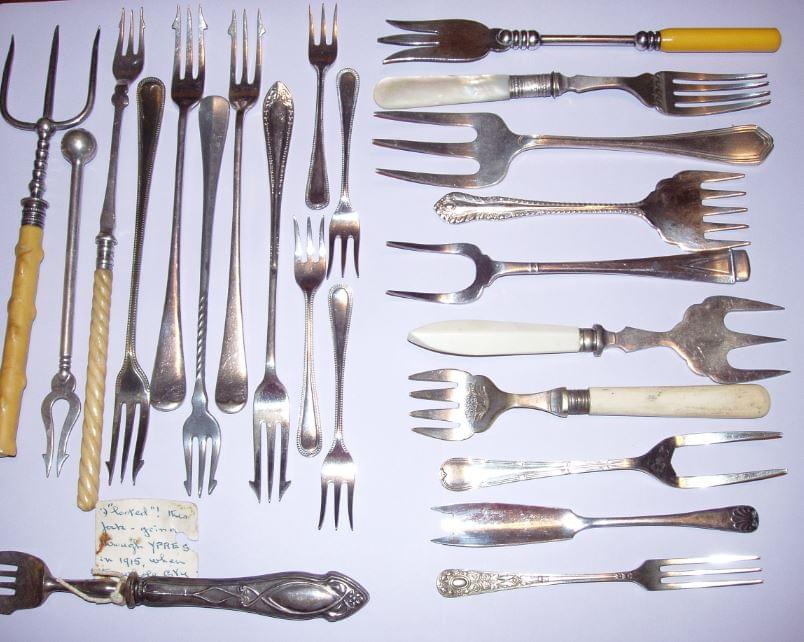A history of cutlery
here’s no debate about our ancestors’ earliest means of transporting food into their mouths: They simply used their hands. In the development of actual cutlery, however, the question is: Which came first, the knife or the spoon?

Knives, in the form of sharpened flints and other stones, were among humanity’s earliest tools, but served more as weapons than implements for eating. Primitive blades date to the Paleolithic period, and by Neolithic times (5000 to 2000 BC), stone blades were fitted to wooden handles. Metal knives much like today’s, with bolster and tang attaching the handle to the blade, soon followed. Iron knives showed up around 1000 BC.
Spoons were initially fashioned from shells or animal horns; our ancient ancestors attached a stick for longer reach. Spoons also were carved from wood; the word spoon comes from the Anglo-Saxon spon, meaning “a chip of wood.” The Romans made spoons from bone, pewter, bronze and silver, gradually tapering the handle end and flaring the front.
In Britain, Viking and Saxon invaders introduced leaf-shaped spoon bowls with decorative acorn carvings on the handle ends. Cromwell and the Puritans gave the spoon its present shape, removing such decorations and flattening the end of the handle while making the bowl more elliptical.
Knives and spoons were both part of a traveler’s kit; hosts were not expected to provide cutlery for their dinner guests. And as late as the Middle Ages, common people still ate with their hands, using four-day-old pieces of bread called “trenchers” to push their food. The wealthy used utensils as much to impress as for practicality. Men ate with their personal knives (also handy in case of a dinnertime dispute) and cut the food for their ladies. Presaging the development of the fork, diners would sometimes employ two knives, one to stab the food and another to slice.
Related news
Related news
NGM: tourism demand is increasing, the SZÉP Card was also a popular means of payment in March
The SZÉP Card also generated strong traffic in March, which…
Read more >Pálinka cocktail competition
The number of participants exceeded expectations at the 2nd Árpád Distillate…
Read more >This is how Hungarians feel about smoking culture
More and more people are using heated tobacco products, so…
Read more >




